Types of mushrooms: forms, ecology, uses and hazards
8 months ago · Updated 6 months ago
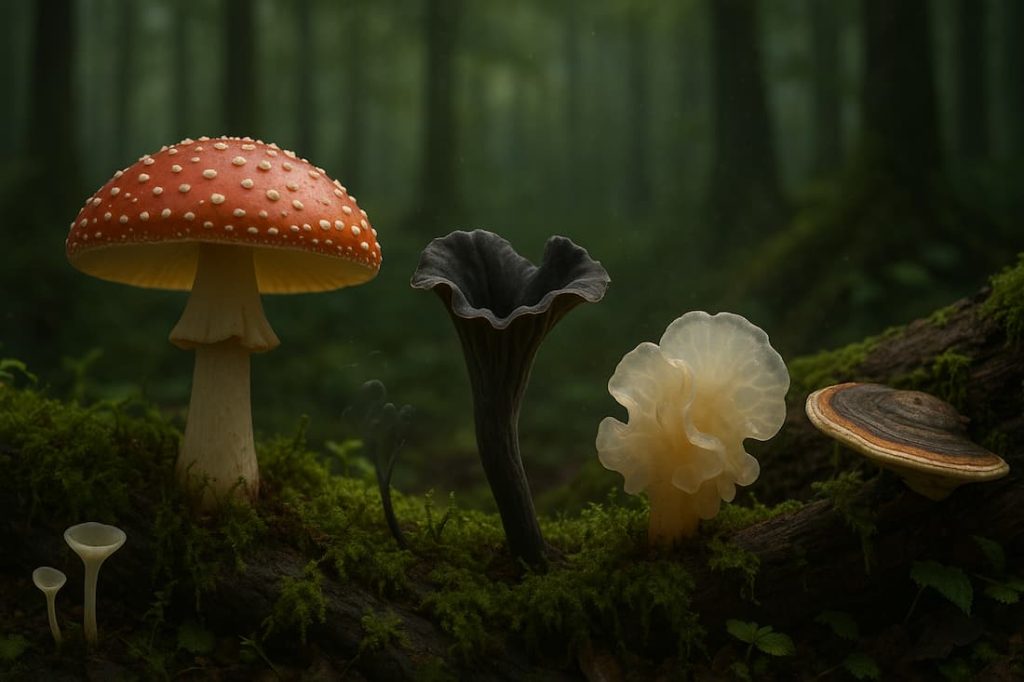
When we think of the forest, we imagine trees, animals or flowers. But there is a hidden, silent and essential world that often goes unnoticed: that of fungi. They are present in all ecosystems and play a key role in the balance of life.
Fungi are neither plants nor animals. They belong to a kingdom apart, with thousands of species ranging from the familiar mushrooms to strange, shiny or slimy forms that seem to be from another planet. Their diversity is immense and we are still far from knowing them completely.
In this post we will explore what mushrooms really are, why they are so important, and how they are classified according to their shape, ecology and use. If you're intrigued by these silent and mysterious beings, you're in the right place. Get ready to look at the world through different eyes.
What are mushrooms?
.
Fungi are living beings that form a kingdom of their own, different from animals and plants. Although they sometimes resemble the latter, they do not photosynthesize and have a unique way of feeding: they absorb nutrients from the environment.
Their body is formed by a network of filaments called mycelium, which is usually hidden underground or inside the matter they decompose. What we usually see, the "cap", is only a small visible part of the fungus, like the fruit of a tree.
Fungi can live in forests, meadows, cities, and even in our bodies. Some grow in symbiosis with trees, others recycle organic matter and some even parasitize other living beings. Their way of life is as varied as it is fascinating.
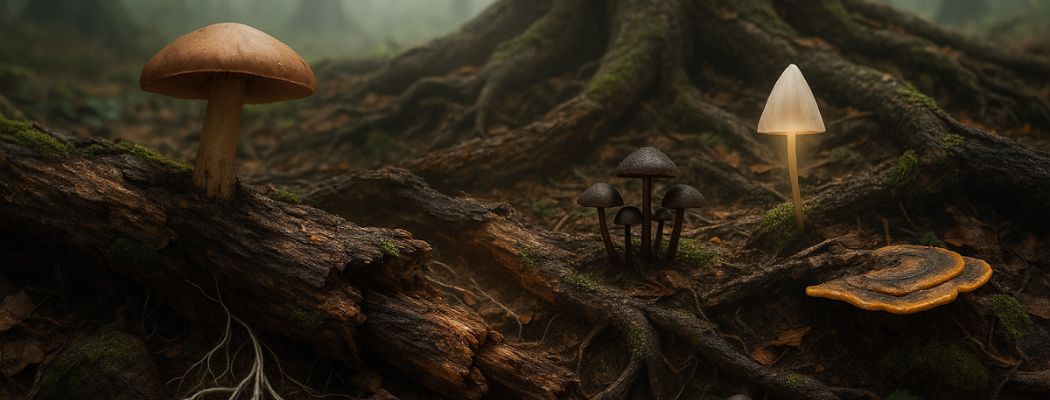
Why are fungi so important?
.
Fungi are essential to life on Earth. Without them, forests could not exist as we know them, and the nutrient cycle would be broken. They are the great recyclers of nature.
Many fungi decompose wood, leaves and organic matter, returning to the soil the nutrients that plants need to grow. Others live in symbiosis with trees, helping them absorb water and minerals through their roots. This relationship is called mycorrhizae, and it is vital for millions of species.
They also benefit us directly: there are fungi that we use to feed ourselves, to produce medicines such as penicillin, or even to make bread and beer. Their contribution in medicine, gastronomy and biotechnology is incredibly valuable.
But not everything is positive: some fungi can be toxic or pathogenic, both for plants, animals and humans. Still, even the most dangerous ones fulfill a specific ecological role.
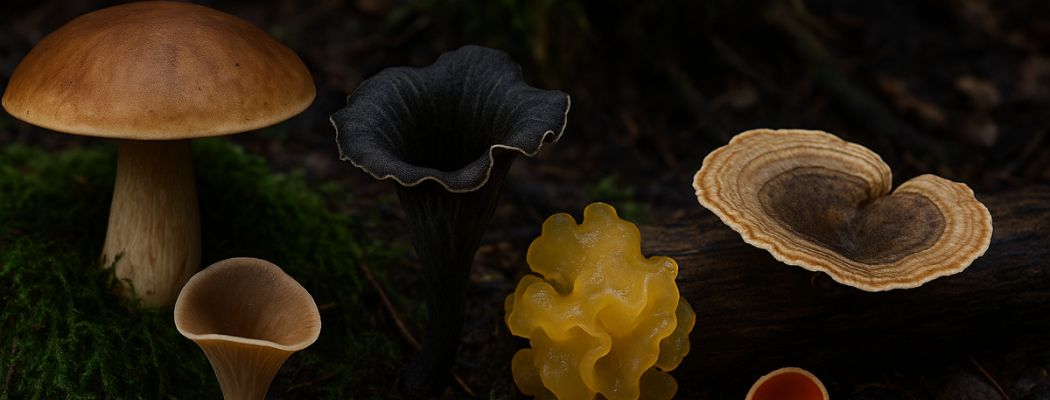
Types of fungi according to their morphology
.
The morphology, that is, the external shape of the mushroom, is the first thing that strikes us when we find them in nature. Although there are thousands of species, many can be grouped by their general appearance.
The best known type is the mushroom with cap and foot, like the mushroom or fairytale mushrooms. They have a cap that protects the spores and a foot that lifts them from the ground. This is the "classic" form that we all imagine when we think of mushrooms.
There are also cup-shaped or trumpet-shaped mushrooms, like the trumpets of the dead. They have hollow, elegant shapes, and often dark or intense colors that make them stand out on the forest floor.
Some mushrooms have a gelatinous or rubbery appearance, like Judas ears. They are soft, translucent, and can even change shape depending on humidity. Their texture makes them unmistakable.
Others adopt corky, crusted or fan-shaped forms, and usually grow on trunks. Sometimes they are mistaken for part of the tree, but they are fungi specialized in degrading wood, such as the tinder fungus or the shelf fungus.
Finally, there are the microscopic, invisible to the naked eye. Although we do not see them, they are in the air, in bread, and on our skin. They are just as important, though not as photogenic.
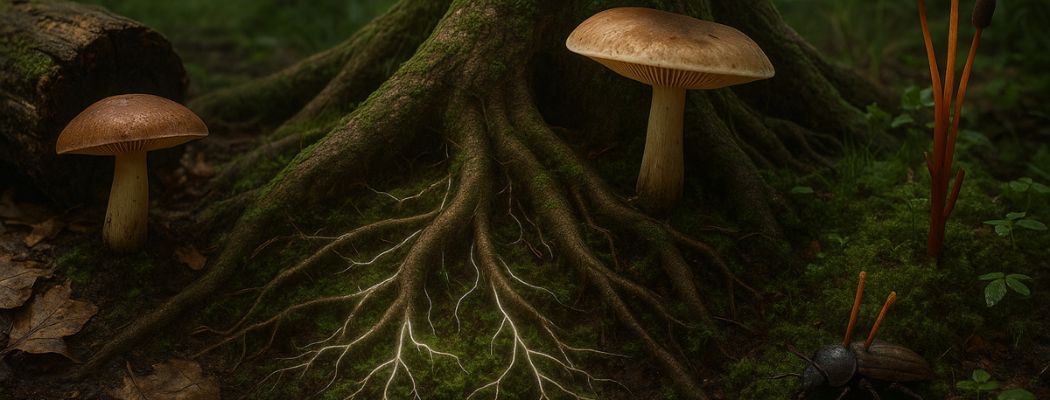
Types of mushrooms according to their ecology
.
When we talk about ecology, we refer to the way in which fungi relate to their environment. Each type plays a different role in the ecosystem, and that influences where they grow and how they behave.
The saprophytic fungi are the great recyclers of nature. They feed on dead matter such as leaves, fallen logs or decaying animals. Thanks to them, organic matter returns to the soil in the form of nutrients.
The mycorrhizal fungi live in symbiosis with the roots of plants and trees. In exchange for sugars, they help plants absorb water and minerals from the soil. This alliance is so efficient that many species could not survive without it.
There are also parasitic fungi, which feed on living organisms, causing them damage. Some attack weakened trees, and others can affect insects, plants or even humans. Although it sounds negative, they are part of the natural balance.
Each of these groups plays an essential role in ecosystems. Their presence (or absence) can tell a lot about the health of the place where they grow.
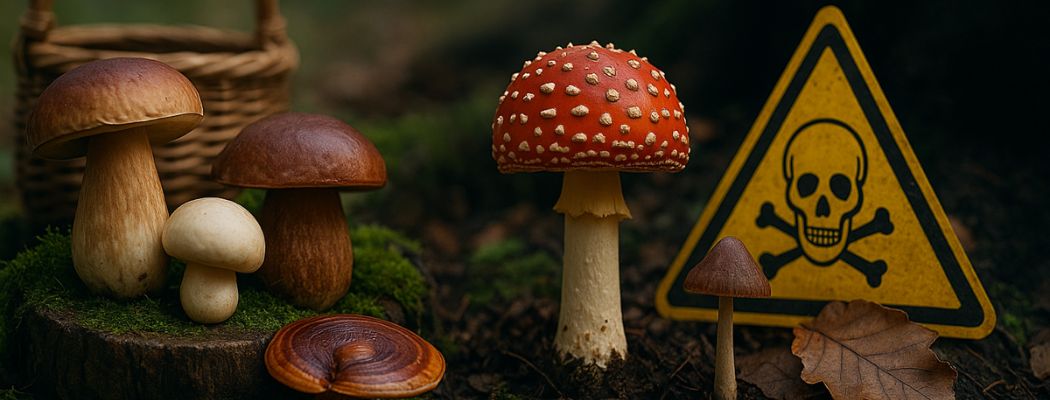
Types of fungi according to their use and toxicity
.
Mushrooms are not only part of the ecosystem: they have also been used by humans for thousands of years. But beware, not all of them are safe. Their relationship with us can be nutritious, healing or dangerous.
The edible mushrooms are the best known and most valued. Mushrooms, chanterelles, boletus and truffles are present in many cuisines around the world. They are nutritious, tasty and some are even considered delicacies.
There are also mushrooms with medicinal properties, such as reishi or cordyceps. They are used in traditional Chinese medicine and in modern supplements for their possible effects on the immune system and general health.
But not everything is so delicious. There are toxic or poisonous mushrooms that can cause anything from digestive discomfort to severe or fatal poisoning. Amanita phalloides, for example, is responsible for most deaths from accidental consumption.
In addition, there are hallucinogenic mushrooms, such as those of the Psilocybe genus. They have been used in ancestral rituals, but they also represent a real risk if consumed without knowledge or in inappropriate contexts.
Therefore, if you are not an expert, never pick or consume wild mushrooms on your own. At first glance, it is very easy to confuse an edible mushroom with a dangerous one.
Scientific classification of mushrooms
.
Although at first glance many mushrooms look alike, science classifies them into groups according to their microscopic characteristics, their way of reproducing and their DNA. This classification helps us to better understand their diversity.
The kingdom Fungi is divided into several main groups, or phyla. The best known are:
- Basidiomycetes: they include most capped mushrooms. They produce spores in structures called basidia. Examples: mushroom, chanterelle, amanita.
- Ascomycetes: include most capped mushrooms.
- Ascomycetes: their spores develop in microscopic sacs called asci. Here we find truffles, morels and many molds.
- Ascomycetes: their spores develop in microscopic sacs called asci.
- Zygomycetes: less known, but common in bread and decaying fruits. They produce spores in simple structures called sporangia.
- Zygomycetes.
- Chitridia and Glomeromycetes: more primitive fungi, many aquatic or specialized for living on roots.
In addition, there are the imperfect fungi, which do not quite fit into these groups because their sexual reproduction has not been observed. Many of them have medical or industrial importance.
The scientific classification of fungi is constantly evolving thanks to advances in genetics and molecular biology. Each discovery brings us closer to understanding this complex and fascinating kingdom.

Te pueden interesar